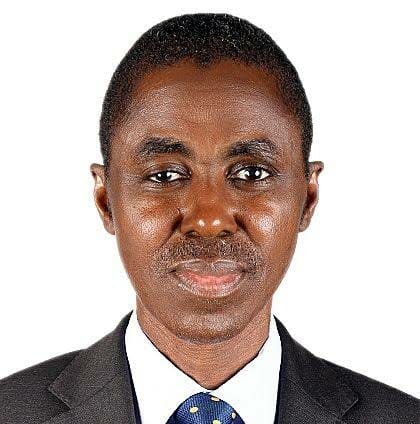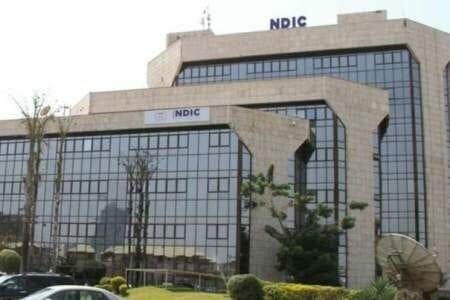The Nigeria Deposit Insurance Corporation (NDIC) adopted the Bridge Banks option, which prevented a systemic crisis and secured N1.021 trillion in deposits, ensuring that depositors could access their funds and financial services.
Mr Bello Hassan, Managing Director of the NDIC, made the announcement on Saturday at the 2021 Editors Forum in Lagos, with the theme “Enduring Extreme Disruptions: Resilience & Reinvention for Banking System Stability & Deposit Insurance.”
He stated that several failure resolution initiatives, including Open Bank Assistance (OBA), Purchase & Assumption (P&A), and Mergers & Acquisition (M&A), had been used to resolve distress in various banks since 1989, culminating in the novel Bridge Bank option.
A bridge bank is an institution established by a national regulator or central bank to run a failed bank until a buyer is found.
The bridge bank is typically established by a publicly backed deposit insurance organization or financial regulator to avoid systemic risk and provide an orderly transition with minimal negative consequences.

A bridge bank’s responsibilities include taking over the deposit of the failed bank and honoring its commitments so that retail clients’ service is not disrupted, as well as servicing secured existing loans to avoid their premature interruption or termination.
These tasks are performed on a temporary basis (usually for no more than two or three years) to allow time for the bank to find a buyer as a going concern.
According to Hassan, the option has so far secured N1.021 trillion in deposits, ensuring depositors’ continued access to their funds and financial services.
“The Bridge Bank option also saved over 12,667 jobs while maintaining over 877 branch networks and services of the affected banks.”
“The corporation’s success in paying guaranteed sums and liquidation dividends demonstrates its dedication to carrying out its one-of-a-kind mandate.”
“As of September 30, 2021, the NDIC had paid a total of $8.268 billion to 443,946 insured depositors and $100.080 billion to uninsured depositors of deposit money banks in liquidation.”
“It also paid N3.413 billion to 90,945 microfinance bank insured depositors and 1.218 million to uninsured depositors.”
“In the same vein, as of September 30th, 2021, the cumulative insured amount paid to 1,553 depositors of closed primary mortgage banks stood at N110.15 million, while 7.965 million was paid as uninsured deposits.”
“Most importantly, the payment of N1.274 billion to 991 creditors and 4.886 billion to 965 shareholders of banks in liquidation as of September 30, 2021 highlighted the Corporation’s success story in bank liquidation.”
“What this means is that the Corporation has amassed enough assets to pay all of the banks’ insured and uninsured depositors who present themselves for payment.” “At the moment, 19 of the 49 DMBs in liquidation fall into this category,” he said.
Hassan urged the editors to continue collaborating with the NDIC in disseminating the NDIC’s mandate to Nigerians in order to improve service delivery.
“It is hoped that by gaining a better understanding of our programs and policies, you will not only provide informed scrutiny and analysis of our activities, but will also assist our other stakeholders in gaining the right insight into the role of NDIC as a member of the financial safety net, and the contributions of DIS to the stability of the nation’s financial system,” he said.
Mr Olatayo Babatolu, Director Bank Examination, NDIC, presented “Resilience and Reinvention Strategies for Deposit Insurance System in the Face of Extreme Disruption in the Banking System,” and Mr Galadima Gana, Director, Insurance and Surveillance, NDIC, presented “The Role of Deposit Insurance System (DIS) in Failure Resolution.”
The papers focused on the NDIC’s efforts to sanitize the financial sector in preparation for current challenges, as well as steps taken to mitigate failures and ensure depositors are adequately catered for when doing business with financial institutions in the country.

















Discussion about this post